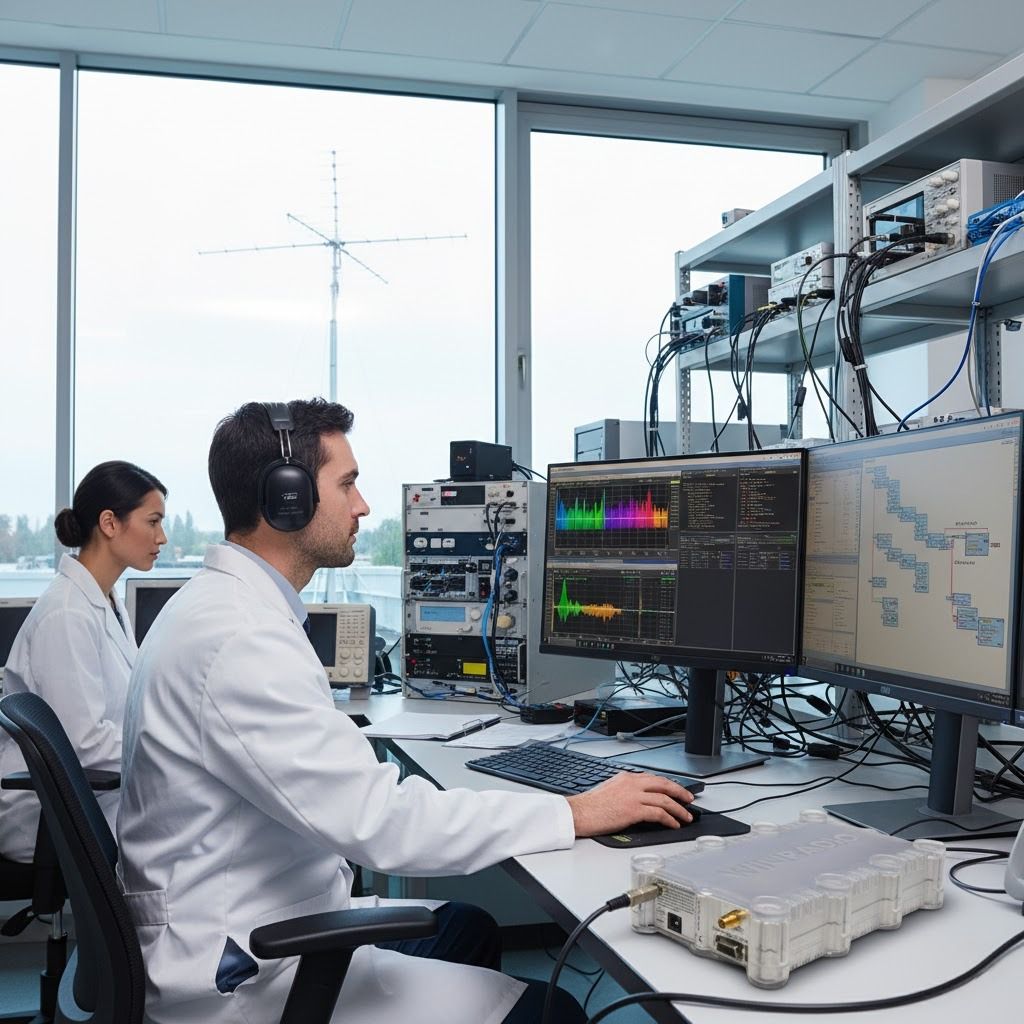Signal Receiver
Enhancing Radio Signal Quality with Signal Receivers
In an era of rapidly advancing technology, ensuring radio signals remain strong, clear, and stable is an indispensable requirement, especially for professional applications. From basic devices to advanced Signal Receivers, this technology not only helps us receive but also optimize incoming waves, providing a smooth, uninterrupted transmission experience. So, how can signal quality be enhanced to meet current trends?
How Signal Receivers Work to Improve Signal Quality
Essentially, a Signal Receiver is a core device tasked with receiving radio waves and converting them into a usable signal (such as audio, video, or digital data).
The receiver's operating principle relies on a complex process: precise frequency filtering, amplification of weak signals, and data decoding, all aimed at minimizing noise and loss. You can envision this device as an intelligent processor, fine-tuning each wavelength to ensure the signal reaching the user is always in the best possible state.
Specific Applications in Enhancing Radio Signal Quality
In practice, the Signal Receiver is an indispensable tool across various high-tech fields:
Monitoring and Broadcasting: Receivers are widely applied in monitoring TV and radio broadcasts to ensure the transmitted signal remains strong, preventing loss of reception or distortion.
Frequency Research and Analysis: In communication and research centers, Signal Receivers are used to analyze frequency spectra, detect anomalous signals, or manage complex sources of signal interference.
For instance, the WinRADiO WR-G315e series supports multiple signal reception modes and boasts exceptional image rejection and noise reduction capabilities. Consequently, even the weakest or highest-frequency radio waves are reliably received and adjusted by this device to achieve optimal quality.

Criteria for Selecting Equipment to Achieve Optimal Performance
To attain the best performance in enhancing radio signal quality, the following technical parameters play a decisive role:
- Signal Receiver Sensitivity: Determines the ability to capture the weakest waves.
- Selectivity: The capacity to separate the desired signal from adjacent interfering frequencies.
- Filters and Noise Reduction Technology: Helps to minimize internal and external interference, effectively purifying the signal.
- Scan Speed and Tunable Bandwidth: Ensures the receiver processes frequencies accurately and promptly, avoiding interruptions.
It is crucial to prioritize equipment with high sensitivity and selectivity, supporting multiple reception modes to adapt flexibly to diverse signal environments. Furthermore, factors such as active noise cancellation, a wide frequency range, and integrated SDR (Software Defined Radio) technology are also critical criteria.
The WinRADiO WR-G315e, by incorporating these modern technologies, delivers a professional signal reception experience and is highly trusted by many experts in the communications and signal research fields.
Finally, attention to software compatibility and connection interfaces is essential, as they enable easy control and signal analysis on a computer, thereby enhancing your overall processing capabilities and radio signal quality.
Conclusion
With its outstanding capabilities in receiving, filtering, and processing signals, the Signal Receiver is an indispensable companion for enhancing radio signal quality. Whether you are a researcher, engineer, or communication specialist, investing in a quality Signal Receiver will help you ensure the clearest, most stable, and most effective radio experience possible.
-
-
-
-
-
-
-
-
-
-
-
-
-
-
-
-
-
-
-
-
-
-
-
-